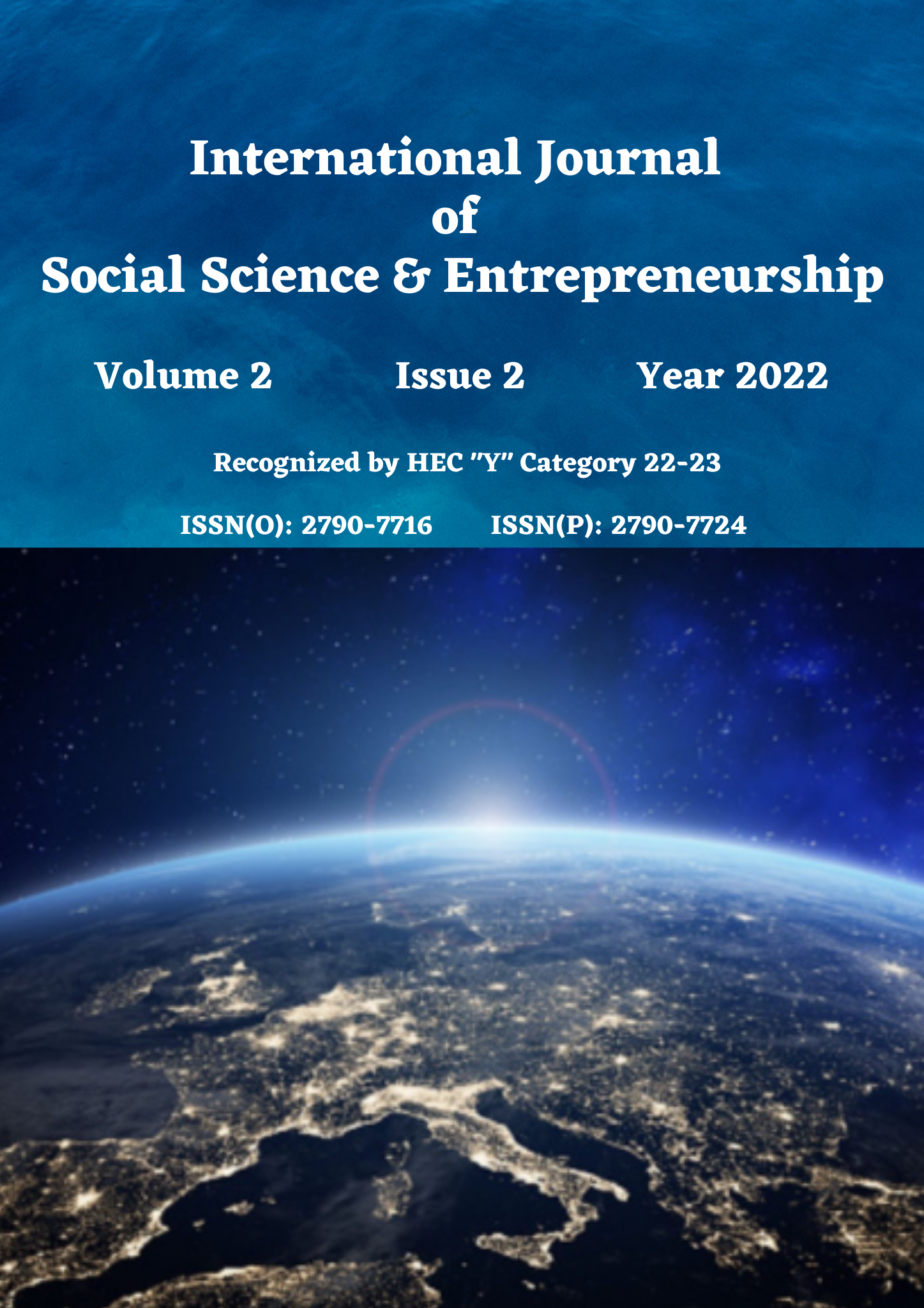How Urbanization Effect Agriculture Output in Perspective of Pakistan
DOI:
https://doi.org/10.58661/ijsse.v2i2.73Keywords:
Urbanization, griculture Output, NARDL, PakistanAbstract
This analysis attempts to explore the impact of urbanization on agriculture output in Pakistan. The NARDL model is employed to analyze the asymmetric effects of urbanization on agriculture output by using yearly data from 1970 to 2020. The outcomes display that urbanization has asymmetric and statistically significant impacts on agriculture output. Similarly, labour force participation rate and gross fixed capital formation are found to be positive and significant factors of agricultural output, while foreign direct investment and external debt turn out to be negative and significant factors of agriculture output in Pakistan. Environmental degradation is found to be inversely but insignificantly related to agriculture output. It is concluded that urbanization is significantly influencing the agriculture output in Pakistan, so to control the negative consequences of urbanization on agriculture output, agriculture land of the country should be protected. Policies need to be designed to protect the urbanization on agriculture lands.









